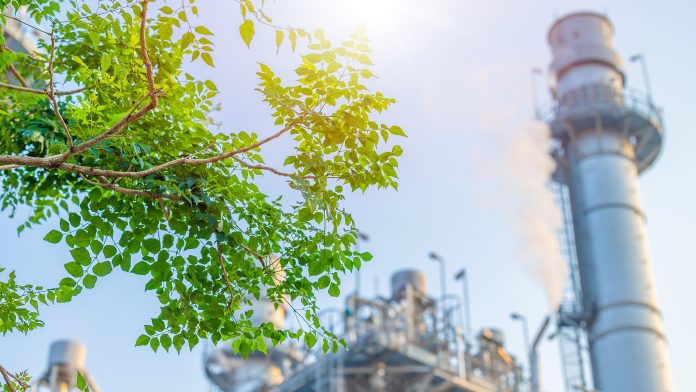Researchers have transformed CO2 into sustainable fuel by shining sunlight on a light-activated material.
A team of researchers has designed a new material made up of copper anchored on nanocrystalline carbon nitride.
Copper atoms are nested within the nanocrystalline structure, allowing electrons to move from carbon nitride to CO2. This is an essential step in producing the sustainable fuel – methanol – from CO2 under the influence of solar irradiation.
The work is published in the Sustainable Energy & Fuels Journal.
How does photocatalysis work?
Light is shone on a semiconductor material in photocatalysis. This excites electrons, enabling them to travel through the material to react with CO2 and water.
This leads to a variety of useful products, including methanol, which is a sustainable fuel.
However, despite recent progress, the process suffers from a lack of efficiency and selectivity.
The problem with carbon dioxide
Carbon dioxide is the greatest contributor to global warming.
Although CO2 can be converted to useful products, traditional thermal methods require hydrogen sourced from fossil fuels.
Because of this, it is important to develop alternative methods based on photo- and electrocatalysis, taking advantage of solar energy and the abundance of water.
Increasing efficiency of photocatalysis
The team devised a process for heating carbon nitride to the required degree of crystallinity, which maximised the functional properties of the material for photocatalysis.
They then used magnetron sputtering to deposit atomic copper in a solventless process, allowing contact between the semiconductor and metal atoms.
Tara LeMercier, a PhD student who carried out the experimental work at the University of Nottingham, School of Chemistry, said: “We measured the current generated by light and used it as a criterion to judge the quality of the catalyst. Even without copper, the new form of carbon nitride is 44 times more active than traditional carbon nitride.
“However, to our surprise, the addition of only 1mg of copper per 1g of carbon nitride quadrupled this efficiency. Most importantly, the selectivity changed from methane, another greenhouse gas, to methanol, a valuable green fuel.”
A significant step towards CO2 conversion
The team’s work represents a step towards a deep understanding of photocatalytic materials in CO2 conversion.
It creates a pathway for creating highly selective and tuneable catalysts where the desired product could be dialled up by controlling the catalyst at the nanoscale.
The work is funded by the EPSRC Programme Grant ‘Metal Atoms on Surfaces and Interfaces for a Sustainable Future.’









